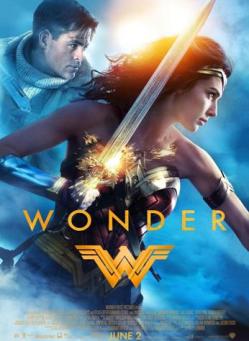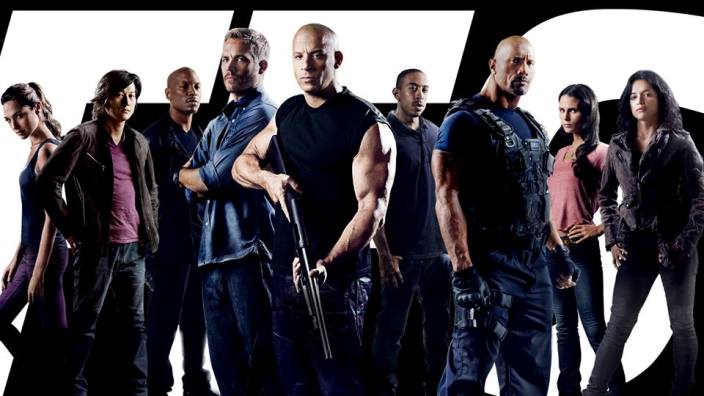An old sub-genre is getting a kick in China now—tomb raiding adventures stories. The newest incarnations are not examples of China just now discovering Indiana Jones, as some have suggested, but are part of a movement set off by an ebook: Ghost Blows Out the Light (2006). The series set records in China and physical books followed. There are eight novels so far. As different people own the rights to different parts of the series, there’s been a TV series and two movies, all with nothing to do with each other and all contradictory. They’ve also all done well at the Chinese box office. It’s amusing to see such excitement about tomb raiding entertainment in China as the mainland government has very dim views of both tomb raiding and of the supernatural. Censors have gotten involved, resulting in the films having self-loathing adventurers and Scooby Doo moments. Magic is fine when stuck in a legendary context, but not in the modern world; that’s why there are so many cinematic retellings of Journey to the West.
Chronicles of the Ghostly Tribe (2015) 
At an archaeological dig, Hu Bayi (Mark Chao) volunteers, along with other soldiers, to accompany Professor Yan and his daughter Ping (Yao Chen) down a dangerous tunnel. These leads to fire bats, avalanches, and a mysterious temple, and also the deaths of most of the party. Several years later Bayi and his childhood friend Wang Kaixuan (Li Feng) are given a chance to return to the area to uncover its secrets and stop additional deaths.
The only one of the three films without professional grave robbers, Chronicles of the Ghostly Tribe is as much a horror story as an adventure tale. There’s an equal helping of Lovecraft’s “At the Mountains of Madness” to go with the Lost Ark raiding. Bayi is a soldier at a legitimate, government-sanctioned dig and gets in over his head. While he ends up having a few special powers, he has no Laura Croft abilities. He’s a typical Lovecraftian lead, stumbling into things best left unknown. It’s easy to empathize with him, as well as with Ping—later renamed Shirley.
The opening act is dark and exciting and everything you’d want in an horrific underground tomb story. But things slacken off after that. The problem with Bayi not being skilled is he stops being a protagonist. Thing happen to him, but he rarely chooses or discovers anything. The answers to the big questions of the film are handed to him. Someone slips him an old academic paper of the professor’s that explains precisely what happened in the past. A librarian shows him the “magic.” The plot would have been far more engaging if Bayi had acted in some way to uncover the secrets.
Things pick up again at the end when it morphs into a creature feature, which only suffers from too many loose threads. The studio is clearly counting on making a sequel, but it’s a sequel worth seeing.
Perhaps the most interesting—and definitely the most fun—part of the film is its commentary on late ‘70s and early ‘80s communist fanaticism. With the cultural revolution still visible in the rear view mirror, Chronicles of the Ghostly Tribe offers up a mob of singing, chanting, hard core party members who cheer on the actual workers while doing nothing productive themselves, and yet still exhaust themselves with their never ending propaganda. Similarly, the stage song on the wonders of Chinese oil production is clearly meant as a poke at a country that took itself far too seriously. As for those pesky censors, they are satisfied with a little science fiction lip service.
Mojin: The Lost Legend (2015) 
Hu Bayi (Chen Kun), Shirley Yang (Shu Qi), and Wang Kaixuan (Huang Bo) are ex-tomb raiders living on the streets of New York. Their last failed mission drudged up painful memories for Bayi who now mopes in the “sick” West. Years earlier, Bayi and Kaixuan had been part of a youth corps during Mao’s Cultural Revolution where both had fallen for Ding Sitian (Angelababy). When their group stumbled upon an ancient site, everyone, including Sitian, was killed except for Bayi and Kaixuan. Upset with the current state of affairs, Kaixuan, who was opposed to giving up the business, takes a job with a mysterious cult that will allow him to search for a flower he’d promised Sitain he’d find for her. Bayi and Yang, seeing trouble, follow to rescue him.
Mojin may be based on the same books and characters as Chronicles of the Ghostly Tribe, but you’d never know it if you weren’t told. These are action heroes and their comic relief in a full out action fantasy, where kung-fu, leaping three times further than any real human could, and shooting grappling hooks like Batman are the norm. No one blinks when zombies appear or green flame burns through rock.
Mojin starts with a lot of promise. There’s about as much depth as one could hope for in Bayi’s and Kaixuan’s troubled past and Shirley Yang looks to be a strong and beguiling character, with Shu Qi owning the screen. The cult leader is a fine villain and her Japanese schoolgirl assassin is straight out of Kill Bill. But things fall apart quickly. The sidekick’s humor is never funny, and the sidekick’s sidekick is an embarrassment (when your sidekick has his own sidekick, you can guess there’s going to be a problem). He never stops talking and I so wanted him to. He is either moaning and complaining or attempting juvenile jokes. It quickly reaches a point where the film plays better with the sound off. Yang, who looked like she would be the protagonist, turns out to be a worthless damsel, with Bayi repeatedly saving her, whether she wanted to be saved or not, as she screamed at him.
Once they all start traipsing about the temple, the focus is on mediocre CGI over story. characters shift in location randomly and survive in close up what definitely would have killed them in the far shot. Looking cool trumps making sense. After a while I just gave up and figured “stuff happens.” Some of it looks good. but it is much less than it should have been.
Like Chronicles of the Ghostly Tribe, Mojin dips into politics, but in an odder and more uncomfortable way. My understanding is that the cultural revolution is seen as a dark time in China. That’s what I got from my Chinese stepfather. But Majin looks back at it with warm nostalgia. The youths went too far, destroying statues and chanting all the time, but this is presented as the foolishness of the young, not a problem with the larger political situation. Mao’s teachings are seen as great philosophy and several people, including Bayi, take solace from his words. “Why can’t we get back to the good old revolutionary days of Mao” isn’t the kind of message I’d expect Chinese censors to be comfortable with. Those same censors were no doubt happier with the grave robbers being mostly miserable, suffering for their profession, and ending up with no financial gain. Of the two sources of supernatural magic, one is Scoopy Doo’d away, which also allows for a hit at religion and cults, while the other is explained, though it makes no sense. But then the government concern isn’t that it make sense.
Time Raiders (2016) 
An older Wu Xie (Lu Han—a Chinese/Korean boy band idol) is approached by a writer to tell the story of what happened when he was a teen. Wu Xie had belonged to a traditional family of grave robbers. His family had tried to keep him out of the business, but his flair for tinkering and exploring turned up the key to the Snake Empress’s tomb. The family set outs, accompanied by the sullen and secretive martial arts master Zhang Qiling (Jing Boran). Zhang Qiling is ageless, having lived so long that he’s forgotten his past, though he does recall his fight fifty years earlier with Hendrix (Vanni Corbellini), a Western arch-villain seeking immortality in the tomb.
Time Raiders (that’s “time,” not “tomb”) is based on a different, popular set of novels, ones that have also spawned a TV series. It also takes the adventure fantasy route, with characters routinely doing the impossible. As with many Asian action films, we have an angsty, manly-man hero who seldom speaks and often gazes off into the universe, when not kicking ass with his over-sized sword and Spider-Man-like danger sense. He is befriended by the young, cheerful, effeminate protagonist. Chinese eyes might see it differently, but for Westerners (and even more the Japanese), the homo-erotic subtext is overwhelming. That’s the only character development we get, so best to cling to it. The rest of the time is spent with over-the-top action fighting CGI opponents against CGI backgrounds. I like a bit of CGI, but I’d like some story to go with it. Here, CGI is king. Well, make that “baron” as the effects work isn’t bad, but isn’t good enough to support the feature on its own. At least someone should have told them that real room are not lit evenly everywhere like in a video game.
A few scenes are impressive (a Rube Goldberg machine to light the ancient tomb is fabulous) but none of it means anything or has any emotional power. For a cheap Saturday afternoon at home, Time Raiders plays out alright, but really would work best for children who don’t mind subtitles (or speak Chinese).
More interesting than the film is trying to making sense of it. Extensive time is spent on flashbacks and visions that the film never clearly explains and that, in a competent narrative, should have been left out. The masked man Wu met as a child is apparently supposed to have been Zhang, who has probably forgotten the incident. But so what? Why is that important? There is the vaguest implication that Zhang may actually be Wu, who has somehow time-traveled to the past and thereby given some meaning to the title. But that doesn’t help us with the censors. That Wu, as an older man, is miserable and his family is gone gives us our necessary lesson that grave robbing is bad. But Time Raiders doesn’t come up with a non-supernatural explanation for the Snake Empress or immortality. It does bring up her using electromagnetic force fields and keeps flashing into space to show stars zipping about and crashing into each other, but that doesn’t help. Rather, I suspect the filmmakers sold the story to the government in a simpler way: none of it happened. It is all a tale that Wu is telling the writer, one that he clings to instead of the truth, that his family all died while raiding a non-magical tomb and that it is his fault because he found the key. It is rare that some variation on “it was all a dream” is preferable to other options, but in this case, it is the only way to make the film mean anything.











